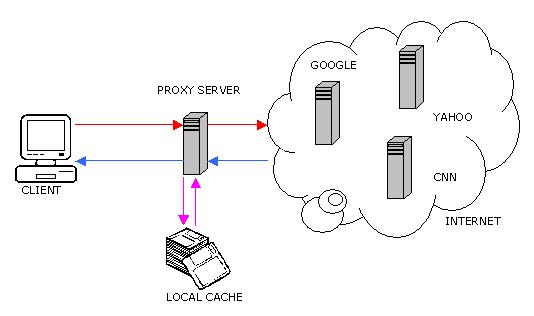WEB PROXY AND CACHING
Web proxy caching stores copies of frequently accessed Web objects (such as documents, images, and articles) close to users and serves this information to them. Internet users get their information faster, and Internet bandwidth is freed for other tasks.
Internet users direct their requests to Web servers all over the Internet. For a caching server to serve these requests, it must act as a Web proxy server. A Web proxy server receives user requests for Web objects and either serves the requests or forwards them to the origin server (the Web server that contains the original copy of the requested information.
Intersat can implement for you both transparent proxy caching, where the user's client software (typically a browser) is unaware that it is communicating with a proxy, and explicit proxy caching, where the user's client software must be configured to send requests directly to the proxy.

The following overview illustrates how Content Gateway serves a user request.
- Content Gateway receives a user request for a document, image, news article, or other Web object.
- Using the object address, the proxy tries to locate the requested object in its object database (cache).
- If the object is in the cache, the proxy checks to see if the object is fresh enough to serve. If the object is fresh, the proxy serves it to the user as a cache hit.
- If the data in the cache is stale, the proxy connects to the origin server and asks if the object is still fresh (a revalidation). If the object is still fresh, the proxy sends the cached copy to the user immediately.
- If the object is not in the cache (a cache miss) or the server indicates that the cached copy is no longer valid, the proxy obtains the object from the origin server, simultaneously streaming it to the user and the cache. Subsequent requests for the object will be served faster because the object will come directly from the cache.
